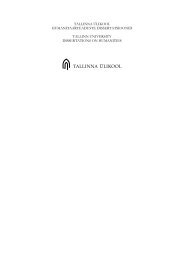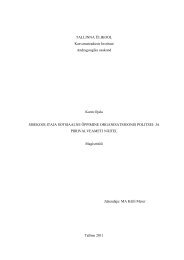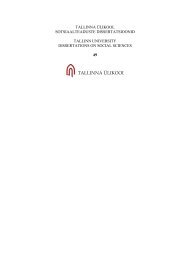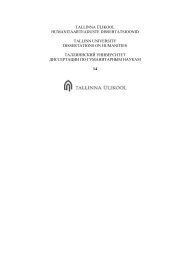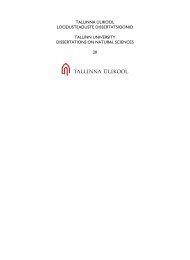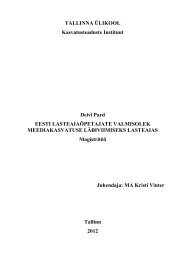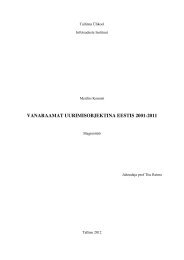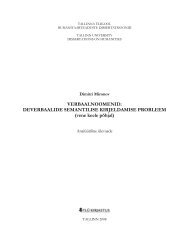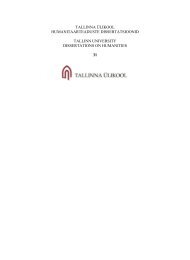Download (1157Kb) - E-Ait
Download (1157Kb) - E-Ait
Download (1157Kb) - E-Ait
You also want an ePaper? Increase the reach of your titles
YUMPU automatically turns print PDFs into web optimized ePapers that Google loves.
treated people like slaves or machines (Becker, 1993, p.16). Malhotra defines Human Capital<br />
as the combined knowledge, skill, innovativeness, and ability of the nation‟s individuals to<br />
meet the tasks at hand, including values, culture and philosophy. This includes knowledge,<br />
wisdom, expertise, intuition, and the ability of individuals to realize national tasks and goals.<br />
Human capital is the property of individuals, it cannot be owned by the [organization or]<br />
nation (Malhotra, 2000, p3.).<br />
Jac Fitz-enz holds that the term Human Capital originated with Theodore Schultz, an<br />
economist interested in the plights of the world‟s underdeveloped countries. He argued<br />
correctly that traditional economic concepts did not deal with this problem. His claim was<br />
that improving the welfare of poor people did not depend on land, equipment, or energy, but<br />
rather on knowledge. He called this qualitative aspect of economics “Human Capital” (Fitzenz,<br />
2000, p. xii).<br />
The investment however on Human Capital is somewhat of a challenge. Intellectual capital<br />
as a whole and Human Capital as one aspect under it pose the challenge on how to evaluate<br />
its success. Jack J. Phillips in “Investing in your company's human capital” urges that despite<br />
the importance of Human Capital, the mystery surrounding the investment in it and the lack<br />
of progress in measuring it accurately have led the Human Resource function to receive a fair<br />
amount of criticism in recent years. He insists that those who feel HR is not important will<br />
argue that the issues are too soft and much is what is invested in Human Capital will have to<br />
be taken on faith; investments must be made based on intuition, logic and what others have<br />
invested (Phillips, 2005, p.2).<br />
A well-prepared and motivated workforce is possibly the most important of the three<br />
intangible assets to support an organisation‟s value creating processes. According to<br />
Peter Drucker “The most valuable asset of a 20th century company was its production<br />
equipment. The most valuable asset of a 21st century institution will be its knowledge<br />
workers and their productivity” (Drucker, 1999, p135). According to Cribb the issues of<br />
workforce demographics, desirable characteristics of the workforce and the obstacles to<br />
achieving the workforce which is well prepared, motivated and strategically ready in today‟s<br />
libraries, are key elements to be considered when discussing human resource development<br />
(Cribb, 2005).<br />
12



